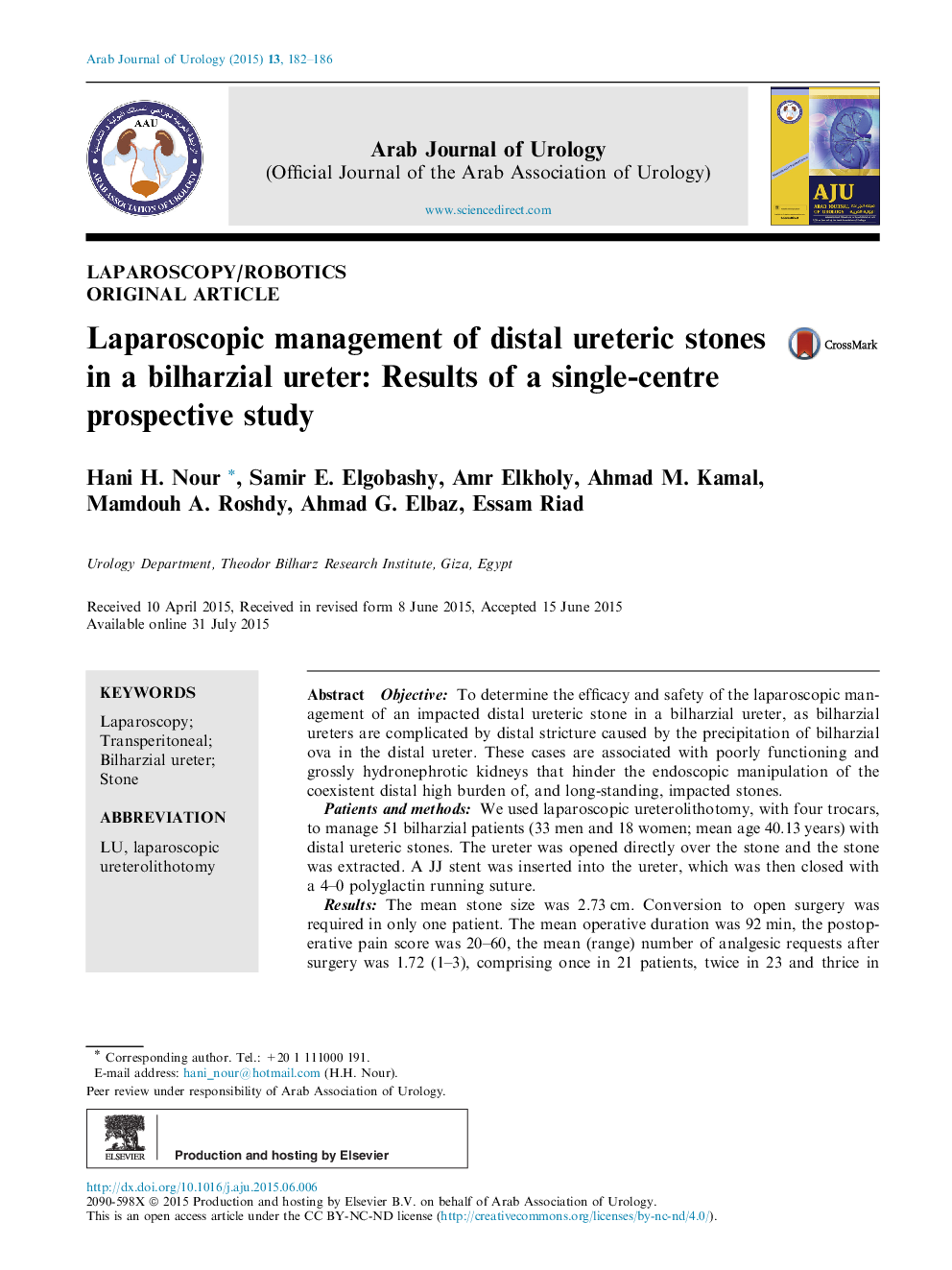| Article ID | Journal | Published Year | Pages | File Type |
|---|---|---|---|---|
| 4268008 | Arab Journal of Urology | 2015 | 5 Pages |
ObjectiveTo determine the efficacy and safety of the laparoscopic management of an impacted distal ureteric stone in a bilharzial ureter, as bilharzial ureters are complicated by distal stricture caused by the precipitation of bilharzial ova in the distal ureter. These cases are associated with poorly functioning and grossly hydronephrotic kidneys that hinder the endoscopic manipulation of the coexistent distal high burden of, and long-standing, impacted stones.Patients and methodsWe used laparoscopic ureterolithotomy, with four trocars, to manage 51 bilharzial patients (33 men and 18 women; mean age 40.13 years) with distal ureteric stones. The ureter was opened directly over the stone and the stone was extracted. A JJ stent was inserted into the ureter, which was then closed with a 4–0 polyglactin running suture.ResultsThe mean stone size was 2.73 cm. Conversion to open surgery was required in only one patient. The mean operative duration was 92 min, the postoperative pain score was 20–60, the mean (range) number of analgesic requests after surgery was 1.72 (1–3), comprising once in 21 patients, twice in 23 and thrice in seven. The mean hospital stay was 2.74 days, and the total duration of follow-up was 7–12 months. The stone recurred in four patients and a ureteric stricture was reported in two. All patients were rendered stone-free.ConclusionLaparoscopy is a safe and effective minimally invasive procedure for distal ureteric stones in a bilharzial ureter with hydronephrosis.
